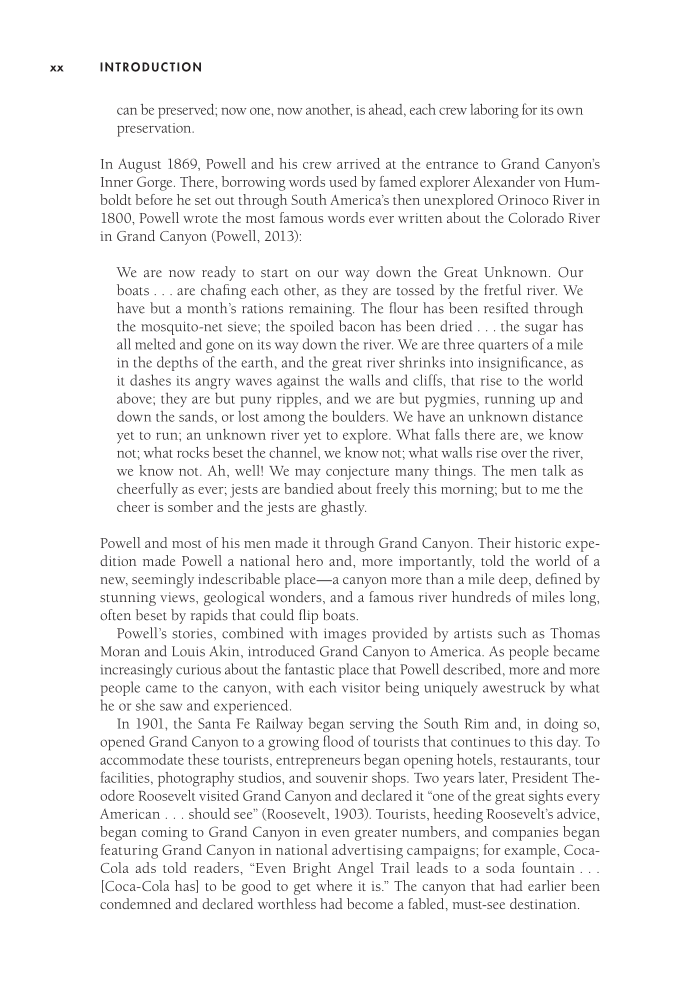Introduction xx can be preserved now one, now another, is ahead, each crew laboring for its own preservation. In August 1869, Powell and his crew arrived at the entrance to Grand Canyon’s Inner Gorge. There, borrowing words used by famed explorer Alexander von Hum- boldt before he set out through South America’s then unexplored Orinoco River in 1800, Powell wrote the most famous words ever written about the Colorado River in Grand Canyon (Powell, 2013): We are now ready to start on our way down the Great Unknown. Our boats . . . are chafing each other, as they are tossed by the fretful river. We have but a month’s rations remaining. The flour has been resifted through the mosquito-net sieve the spoiled bacon has been dried . . . the sugar has all melted and gone on its way down the river. We are three quarters of a mile in the depths of the earth, and the great river shrinks into insignificance, as it dashes its angry waves against the walls and cliffs, that rise to the world above they are but puny ripples, and we are but pygmies, running up and down the sands, or lost among the boulders. We have an unknown distance yet to run an unknown river yet to explore. What falls there are, we know not what rocks beset the channel, we know not what walls rise over the river, we know not. Ah, well! We may conjecture many things. The men talk as cheerfully as ever jests are bandied about freely this morning but to me the cheer is somber and the jests are ghastly. Powell and most of his men made it through Grand Canyon. Their historic expe- dition made Powell a national hero and, more importantly, told the world of a new, seemingly indescribable place—a canyon more than a mile deep, defined by stunning views, geological wonders, and a famous river hundreds of miles long, often beset by rapids that could flip boats. Powell’s stories, combined with images provided by artists such as Thomas Moran and Louis Akin, introduced Grand Canyon to America. As people became increasingly curious about the fantastic place that Powell described, more and more people came to the canyon, with each visitor being uniquely awestruck by what he or she saw and experienced. In 1901, the Santa Fe Railway began serving the South Rim and, in doing so, opened Grand Canyon to a growing flood of tourists that continues to this day. To accommodate these tourists, entrepreneurs began opening hotels, restaurants, tour facilities, photography studios, and souvenir shops. Two years later, President The- odore Roo se velt visited Grand Canyon and declared it “one of the great sights every American . . . should see” (Roosevelt, 1903). Tourists, heeding Roosevelt’s advice, began coming to Grand Canyon in even greater numbers, and companies began featuring Grand Canyon in national advertising campaigns for example, Coca- Cola ads told readers, “Even Bright Angel Trail leads to a soda fountain . . . [Coca-Cola has] to be good to get where it is.” The canyon that had earlier been condemned and declared worthless had become a fabled, must-see destination.
Document Details My Account Print multiple pages
Print
You have printed 0 times in the last 24 hours.
Your print count will reset on at .
You may print 0 more time(s) before then.
You may print a maximum of 0 pages at a time.

























































































































































































































































































































































































































































